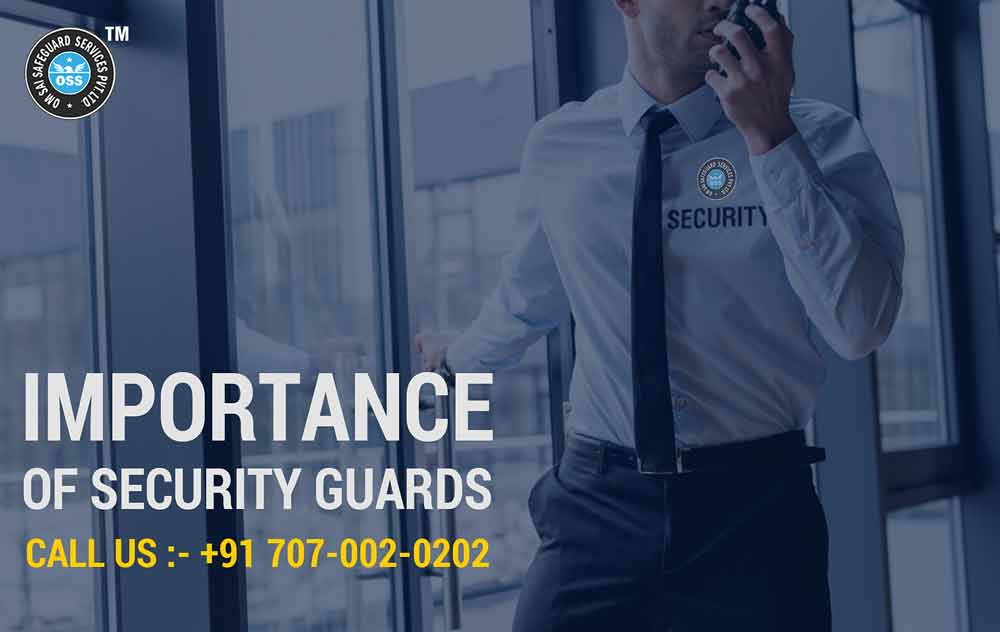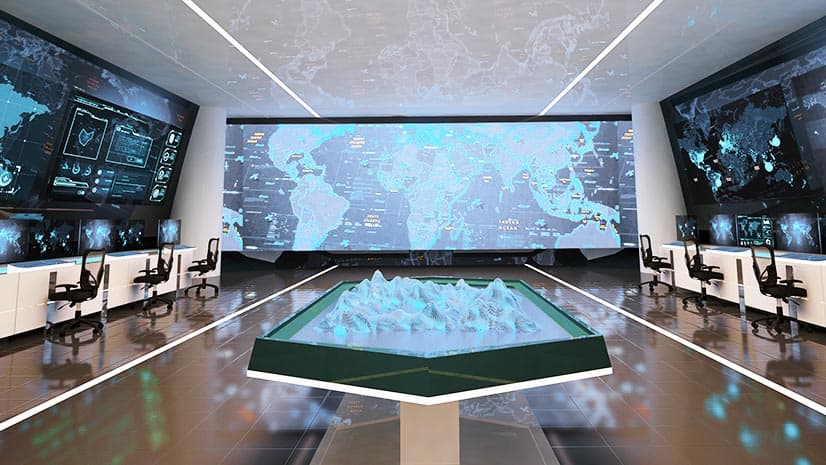Corporate Security Demystified: Enhancing Your Organization Defenses
Corporate Security Demystified: Enhancing Your Organization Defenses
Blog Article
From Cybersecurity to Physical Actions: Reinforcing Company Safety And Security in an Altering Globe
In today's swiftly evolving electronic landscape, the importance of business safety and security can not be overstated. As cyber risks come to be significantly advanced and widespread, organizations must surpass standard cybersecurity procedures to secure their properties and operations - corporate security. This is where the integration of physical security procedures becomes essential. By combining the strengths of both cybersecurity and physical protection, business can develop a comprehensive protection method that resolves the varied variety of hazards they deal with. In this conversation, we will discover the transforming threat landscape, the need to integrate cybersecurity and physical safety, the implementation of multi-factor verification actions, the relevance of worker recognition and training, and the adaptation of protection actions for remote workforces. By checking out these key locations, we will gain useful insights right into exactly how companies can reinforce their corporate security in an ever-changing world.
Recognizing the Changing Threat Landscape
The advancing nature of the contemporary world necessitates a comprehensive understanding of the changing threat landscape for efficient business safety. In today's interconnected and digital age, dangers to business safety and security have come to be a lot more intricate and sophisticated. As innovation advancements and services become increasingly dependent on electronic facilities, the capacity for cyberattacks, data violations, and other security violations has substantially raised. It is crucial for organizations to stay informed and adjust their safety and security gauges to deal with these evolving risks.
One key element of comprehending the transforming hazard landscape is recognizing the different sorts of threats that companies encounter. Cybercriminals are constantly establishing brand-new techniques to exploit susceptabilities in computer systems and networks. These threats can range from malware and ransomware attacks to phishing rip-offs and social engineering tactics. Additionally, physical risks such as theft, vandalism, and business reconnaissance stay common worries for companies.
Monitoring and assessing the threat landscape is necessary in order to identify prospective dangers and susceptabilities. This includes staying updated on the most recent cybersecurity trends, examining risk intelligence reports, and carrying out regular risk assessments. By comprehending the changing threat landscape, organizations can proactively execute suitable safety actions to minimize dangers and safeguard their possessions, online reputation, and stakeholders.
Integrating Cybersecurity and Physical Safety
Integrating cybersecurity and physical safety and security is vital for comprehensive company defense in today's electronic and interconnected landscape. As companies increasingly rely upon modern technology and interconnected systems, the borders between physical and cyber risks are coming to be obscured. To properly protect against these threats, a holistic approach that incorporates both cybersecurity and physical safety and security procedures is necessary.
Cybersecurity focuses on protecting electronic assets, such as systems, networks, and information, from unauthorized access, interruption, and theft. Physical safety, on the other hand, encompasses procedures to protect physical properties, individuals, and facilities from hazards and susceptabilities. By incorporating these 2 domain names, companies can attend to vulnerabilities and dangers from both physical and digital angles, thus boosting their general protection posture.
The integration of these 2 techniques enables for a more thorough understanding of safety threats and allows a unified action to occurrences. Physical gain access to controls can be enhanced by incorporating them with cybersecurity procedures, such as two-factor verification or biometric identification. In a similar way, cybersecurity procedures can be complemented by physical safety and security actions, such as monitoring cameras, alarm systems, and protected access factors.

Executing Multi-Factor Verification Steps
As organizations significantly prioritize extensive protection steps, one effective approach is the execution of multi-factor verification measures. Multi-factor verification (MFA) is a protection method that requires users to offer multiple kinds of identification why not try these out to access a system or application. This approach includes an additional layer of defense by combining something the individual recognizes, such as a password, with something they have, like a protection or a fingerprint token.
By carrying out MFA, companies can substantially boost their protection posture - corporate security. Standard password-based verification has its limitations, as passwords can be quickly jeopardized or neglected. MFA alleviates these risks by adding an additional authentication element, making it harder for unapproved individuals to get to sensitive information
There are several sorts of multi-factor verification approaches available, including biometric authentication, SMS-based confirmation codes, and hardware symbols. Organizations require to assess their specific requirements and pick one of the most proper MFA remedy for their demands.
Nonetheless, the implementation of MFA ought to be meticulously intended and performed. It is critical to strike a balance in between safety and security and functionality to avoid user aggravation and resistance. Organizations needs to additionally take into consideration possible compatibility issues and offer appropriate training and support to guarantee a smooth transition.
Enhancing Staff Member Recognition and Training
To enhance company protection, organizations must focus on boosting worker understanding and training. In today's swiftly progressing threat landscape, staff members play a vital role in securing a company's delicate info and assets. Several safety breaches occur due to human error or absence of understanding. As a result, companies require to buy detailed training programs to educate their workers about possible threats and the very best methods for minimizing them.
Reliable staff member recognition and training programs should cover a large variety of topics, consisting of information security, phishing assaults, social design, password hygiene, and physical safety and security measures. These programs ought to be tailored to the particular requirements and duties of various employee duties within the organization. Normal training simulations, workshops, and sessions can aid workers develop the needed skills and expertise to determine and respond to protection risks successfully.
Additionally, organizations ought to motivate a culture of protection understanding and give recurring updates and tips to keep staff members notified about the most recent hazards and reduction techniques. This can be done with interior interaction networks, such as newsletters, intranet portals, and e-mail campaigns. By cultivating a security-conscious workforce, organizations can significantly decrease the probability of safety and security incidents and secure their important possessions from unapproved gain access to or concession.

Adapting Safety Steps for Remote Labor Force
Adapting corporate safety steps to accommodate a remote labor force is necessary in guaranteeing the protection of delicate info and possessions (corporate security). With the boosting pattern of remote job, companies need to execute appropriate security actions to minimize the risks connected with this brand-new method of working
One critical facet of adapting protection actions for remote work is establishing secure communication networks. Encrypted messaging platforms and online exclusive networks (VPNs) can assist protect delicate details and protect against unapproved accessibility. In addition, companies should enforce making use of solid passwords and multi-factor verification to enhance the safety and security of remote gain access page to.
Another essential factor to consider is the implementation of safe remote accessibility options. This entails providing staff members with safe and secure access to business resources and data through digital desktop computer facilities (VDI), remote desktop computer procedures (RDP), or cloud-based options. These technologies guarantee that sensitive information remains secured while making it possible for staff members to perform their functions successfully.

Last but not least, comprehensive click for info protection recognition training is essential for remote employees. Training sessions ought to cover finest methods for firmly accessing and handling delicate information, identifying and reporting phishing efforts, and maintaining the overall cybersecurity hygiene.
Final Thought
In conclusion, as the danger landscape continues to develop, it is essential for organizations to enhance their safety and security determines both in the cyber and physical domains. Integrating cybersecurity and physical safety, implementing multi-factor verification measures, and improving worker understanding and training are crucial actions in the direction of attaining robust corporate safety and security.
In this discussion, we will check out the altering threat landscape, the requirement to incorporate cybersecurity and physical security, the execution of multi-factor authentication actions, the relevance of staff member understanding and training, and the adjustment of safety measures for remote labor forces. Cybersecurity measures can be complemented by physical safety and security actions, such as security cams, alarm systems, and safe accessibility factors.
As organizations significantly focus on extensive safety and security steps, one reliable strategy is the implementation of multi-factor authentication measures.In final thought, as the risk landscape continues to evolve, it is critical for organizations to strengthen their security gauges both in the cyber and physical domain names. Incorporating cybersecurity and physical protection, implementing multi-factor verification measures, and improving employee recognition and training are crucial actions in the direction of accomplishing durable company safety and security.
Report this page